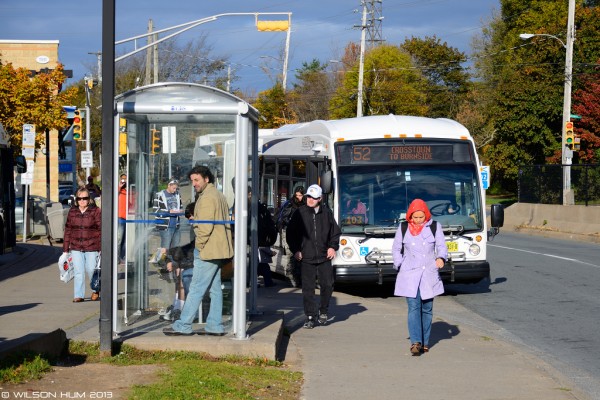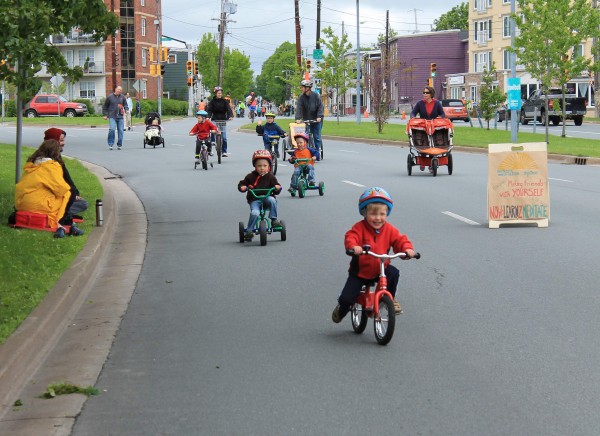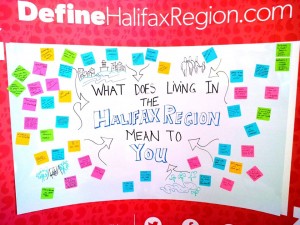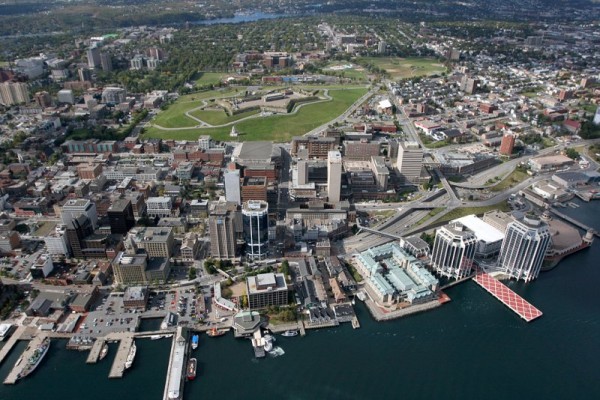Editor’s Note: Below is an open letter from Frank Palermo sent to HRM Mayor Mike Savage and the Greater Halifax Community on the importance of the Regional Plan and the short-term opportunities to improve it considerably.
HALIFAX – HRM needs to change. The Regional Plan (RP+5) provides the occasion for moving in a new direction of our choosing. Over the last two years while the Regional Plan has been under review, many development proposals have been brought forward and several large projects have been built. Along the way there has been turbulence. There have been too many community meetings and yet not nearly enough meaningful engagement; too many plans and studies, started and stopped, sometimes at odds with policies and sometimes in conflict with each other. All of these are symptoms of a turbulent time and the need for change.
There is now a window before Council formally considers the Regional Plan (RP+5) to engage the community with some intensity, so collectively and collaboratively and openly we can make adjustments, be more ambitious and produce a Plan that is more effective. Rather than thinking about the next two or three months as a backroom activity dedicated to preparing a more polished draft to be considered at the Public Hearing, it is possible to use it as a moment for serious and creative reflection. Rather than accept the Plan and planning as polarizing we can build on shared values and use it as an opportunity to bring us together.
For the last 60 years we have been building a city and a region and a province that is car-dependent. There are now signs, here and in regions and cities around the globe that separating home and work and play, which may have been reasonable in the last century, is no longer necessary, desirable or wise. Separation increases travel time, doesn’t make the best use of existing public infrastructure, requires more road construction, consumes valuable land and natural resources, affects climate change, makes transit and active transportation less effective, increases property taxes and contributes to obesity. That means it affects all of us, every day. It also means that standing still is not a choice.
In 2006, HRM took a stand. At least conceptually, the Regional Plan set out to concentrate growth in the Centre Area and in Transit Oriented Nodes within the suburban ring. It didn’t deliver on Functional Plans or on rethinking public infrastructure. It also didn’t fundamentally affect attitudes within government. Municipal departments continued and still continue to operate, study, think and act within the narrowly defined scope of their historic mandates, rulebooks and expertise. On the positive side, the RP gave rise to HRM by Design. The Downtown and Centre Area Plans embraced intensification and advanced 10 broad principles for making more vibrant, livable, walk- able, street oriented and transit focused precincts and neighbourhoods. Two observations pertaining to this work are particularly relevant to our current discussion (or lack of discussion) about the RP+5:
- The capacity to accommodate new growth at reasonable density within the Downtown and Centre Area far exceeds the target figure of 25%. In fact there are many gaps (empty undeveloped land, surface parking lots and outdated auto oriented and land intensive uses) that need to be filled much like scars that need to be healed.
- Better design and more intense development are necessary but not sufficient to produce the kind of city we want. Private sector development is dependent on and needs to be supported by leading investment in public infrastructure particularly as it relates to active transportation, transit and streetscape improvements.
Now the RP 5-year review is nearing completion. The outcome of a fairly turbulent and largely closed process is in essence a Regional Plan for 2031. In this spirit, it is urgent to ensure that what is proposed clearly reflects what we value as a community, what we learned from HRM by Design, and perhaps more importantly, that the Plan moves us forward and inspires us to work collectively, across boundaries to deal with both the demands and the enormous potential of the moment.
In this light, the proposed RP 2031 needs some adjustment. It is not just a missed opportunity. It could easily become a costly, disruptive and dispiriting misstep. The attitude, connections and momentum all need to be reconsidered.
The Attitude

The way the RP 2031 was prepared and the way in which it is currently being considered underestimate both the value and power of community participation. Public engagement in the review is not only limited, it has been viewed as counterproductive. The process has little room, leaves little time and has no patience for open, community-based discussion. Council’s intent is to proceed directly to a public hearing for a document that has been considered and altered behind closed doors for many months. Open, on-going, creative community engagement is not just nice or interesting. It is not just democratic. It is fundamental to the content, the tone and the implementation of the Plan. It makes little sense to produce a Plan, however quickly, if it will have little or no effect and does not capture the community’s aspirations or inspire all of us to work individually and collectively to make it happen. Nor does the process outlined in RP+5 for the preparation of Secondary Community Plans and Functional Plans indicate a spirit of openness and collaboration. The sense is that Community Plans will be done for and to the community. This approach is both inappropriate and impractical.
The Plan sets out to limit expectations of what can and should be done. In doing so it underestimates our potential and fails to capture the spirit of the moment. Although it makes a lukewarm case for change, it promises a future that is not measurably different from the present. The growth targets are very low. Furthermore, it is not clear what they mean nor is it recognized that growth cannot be predicted or controlled directly by planners, developers, or even the Council. Meanwhile, the RP+5 is ambivalent about public infrastructure that we (the community) can affect directly. It is public infrastructure that determines the form of the city, affects the location and intensity of development and influences the pace of growth.
The Greenbelt is rendered meaningless as a strategy for both protecting natural resources and consolidating/intensifying urban form. Development will continue to spread out with minimal regard for climate change, cost of infrastructure, or protection of natural resources. Through exceptions, hedging on growth boundaries and a willingness at the policy level to accommodate business parks, industrial parks and certain housing developments in rural areas beyond current service boundaries, the greenbelt idea, if not the entire growth strategy, is compromised.
The Connections
While the stated intentions of the RP argue for connecting land use, built form, density, vehicular movement, transit, active transportation and the environment, in practice the Plan doesn’t make the connections explicit. If they do exist, they are certainly sufficiently vague and muffled as to be misunderstood or simply disregarded. It can be argued that connecting spatially across boundaries, linking long-term ambitions to immediate action and connecting across expert and sector boundaries is an essential quality of any Plan and a particularly important aspect of a Regional Plan. Yet departments, agencies, boards, authorities and groups within HRM continue to do their own thing and work in isolation.
The truth is that we cannot keep doing things as we have been. If we want to concentrate development downtown and in the centre area we cannot also allow it to happen everywhere just as intensely and with fewer restrictions. If we want more emphasis on transit we cannot leave it vague and dependent on future demand. If we want more intense development along transit corridors we have to identify the corridors and commit to the transit. If we want intense, walkable, active and healthy communities downtown and in the Centre Area we cannot continue to build parking in those areas. If we are looking for Transit-Oriented Development opportunities in the suburban ring we have to think beyond buses and strategically locate terminals. We should not build roundabouts to facilitate continuous flow of traffic because it is at the expense of people, bikes, and transit.
During the last several months while the draft Plan was being considered, HRM has embarked on a number of studies, projects and community consultation sessions that are counterproductive and costly. They are based on a misunderstanding of what both the existing and the proposed RP are meant to do or perhaps indicate that many Departments in HRM don’t see the Plan as at all relevant to their mission. If our future is modeled around healthy, walkable, complete neighbourhoods we need to rethink the transportation system and our commitment to healthy, walkable communities now, not later.
There are many current examples of plans, studies, projects and initiatives undertaken by/for HRM that work at cross purposes:
Public transit

While the proposed RP+5 draft hints at a new level of commitment to transit, and while there is every indication that public transit is key to nurturing the kind of downtown HRM by Design envisages, and while it is also clear that pedestrian-oriented streets and public transit are critical in achieving any growth strategy predicated on increasing density along main streets and connecting the downtown to new suburban centres, the proposed Plan is silent on what such transit means. It does not indicate even conceptually how it would work. In fact it strongly implies that transit “improvements” will be based on “demand.”
Concurrent with Council’s deliberation around the Draft Plan, Metro Transit commenced a 5-year transit service study. This was described as an exercise to figure out what we should do to get better service and what tradeoffs we are willing to make. There are two problems with this: it focused only on transit and making adjustments to the existing (bus) system, and there was no reference to the RP as a basis for developing a longer term idea for transit or seeing public transportation in conjunction with the growth strategy. It took several months, considerable staff and community time, at some cost, to determine that the study should focus on the larger transit system. To my knowledge, this new mandate is also being explored in relative isolation, without a clear connection to the RP and with limited community involvement.
This matters. It is a problem with real and immediate consequences.
Downtown parking
Parking is key to how we think of and use public space. It is also a critical ingredient in shaping and supporting the transportation system and affects our thinking about streets.
It is counterproductive to consider downtown/Centre Area parking as separate from the growth strategy, or separate from an idea about public transportation or a shared understanding of the community’s goals relative to streetscapes, corridors and walkable neighbourhoods. Yet, possibly because this idea of connectivity is not clearly enough expressed in the RP, we find ourselves at the doorstep of commencing yet another study which may also serve as a distraction.
Roundabouts in the Centre area
It is at least inconsistent to proceed at this time with detailed plans to build roundabouts in the Centre Area to improve the flow of vehicular traffic into the downtown. Facilitating the flow of traffic is not consistent with the stated intentions in any of HRM’s Plans, all of which are clear that we do not want more cars downtown.

The heart of the city is a place for people, not parking. Streets have a social function as open space and meeting places, not just traffic or car storage. To proceed with developing roundabouts, which both conceptually and practically give priority to cars over people, bikes and transit, is ill advised at best. It also implies that the RP needs to be stronger and sharper about what priorities mean and how we need to think across traditional boundaries.
Health initiative
We have to move beyond a city form that meets aspirations and demands arising from the Industrial Revolution or current (short term) private sector expectations. In that context there will never be enough parking, roads or green-field development. Crisis management rather than planning becomes the mode of operation.
In the last several months, a new voice and a new agenda has emerged. Mayor Savage has recognized health as a new vision and a direction that can both move us forward and bring us together. It is both conceivable and inspiring that HRM would set out to be the healthiest community in Canada, much like Vancouver is dedicated to being the greenest.

It now seems appropriate to consider replacing the rather general and generic vision for HRM that is in the RP+5 draft with one whose focus is on health. This single move would change the tone of the plan as well as the content. More significantly, it would provide a specific direction to align, organize and gauge the appropriateness of any project or public initiative, including transit, parking and roundabout studies.
Branding
“Branding” is also a rogue or disconnected project. It is a significant initiative that should be aligned with the Regional Plan. A brand cannot just be imposed. It should grow out of the vision, values and principles that define who we are and where we are going. In that spirit I would argue that we should stop obsessing about living in a Region or being a City. Perhaps in the spirit of the Ivany Commission it might be appropriate to think of Nova Scotia as a 21st Century City-Region.

In any event, it seems best to define ourselves relative to what we want to be, whether the “healthiest community” or the “walkable region” or…That is the connection to the RP2031. It is counterproductive, confusing and costly to think of branding as a separate study.
The Momentum
A firm basis for proceeding with Community Plans and Functional Plans (now called “priority plans) is missing. Yet the purpose of a Regional Plan is to provide a comprehensive, long-term view and to serve as the common shared basis for more specific, local and sector plans. In this regard it is reasonable to expect that the RP would provide a clear idea, organizational structure and development strategy for the public transit and active transportation systems. It is also reasonable to expect the delineation of a community-based approach for development of such plans. It does not seem reasonable to argue that basic structural ingredients will come later. They cannot come later because the community plans cannot be done without a specific conceptual/physical idea of the transportation, transit, active transportation, open space and service networks.
It is clear that everyone in government and outside is doing the best they can within the prescribed limits of their positions, resources, mandates, codes of operation and outdated rulebooks. Unless we can redefine the ambition, rewrite the codes and replace the thinking we will not be able to make any change happen.
The point here is that the RP as it is currently written (almost by necessity) disregards the considerable body of community-based work that has been done both to redefine public infrastructure and to raise awareness and expectations regarding community engagement. Considerable momentum and agreement exists at the community level about streetscapes, complete communities, food self-reliance, public transit, active transportation and the greenbelt, all of which are much more clear, specific and useful than the vague references included in the Plan.
Over the last couple of years, through many meetings, several large community design sessions and experiments on the ground, the Planning and Design Centre, in conjunction with Fusion Halifax and others, has produced a clear and specific idea and a physical concept for public transit.
Similarly, specific ideas have been developed for active transportation and strategies for advancing Community Plans. All of these initiatives, including the Mayor’s commitment to health have been sidelined by the plan. As a consequence the momentum, which has been building at the community level, is in danger of dissipating.
Recommended Action
So, what should we do?
I would ask Council to designate a 60-day period (say from the beginning of March to early May) as the: RP2031 COMMUNITY COLLABORATION OPEN PLAN EVENT. This will provide an opportunity for community members, councilors, staff from across HRM, community organizations, professionals, public agencies and other levels of government to work together in an open and creative setting (perhaps in a storefront operation) to:
- Fine-tune the attitude and tone of the Plan, including the Vision and Principles. The branding project should be included.
- Set higher expectations particularly as related to health
- Describe a new community-based, open and collaborative process for developing community plans and functional plans
- Develop, in conjunction with work done to date, a conceptual framework for the Regional transportation system which provides specific direction and commitment for public transit and active transportation
- Establish a clear set of intentions for the greenbelt including how the belt serves to contain all new development within the serviced suburban area and the current serviced boundaries of rural communities.
- Ask transportation planners/consultants and others involved in current transportation “improvement” projects including transit, roundabouts and parking to work as part of this collaboration, and within the attitude and vision of the RP to develop and align all these projects.
I believe this is a significant moment in the history of this city. We have to get the attitude right. We need to find a way to smartly connect all of the pieces and to build on the considerable momentum that exists in this creative community. I am happy to help in whatever way I can.
I would welcome the opportunity to elaborate on any of these ideas and to discuss how we might move forward.
Sincerely,
Frank Palermo
Professor, Faculty of Architecture and Planning, Dalhousie University
Director, Cities and Environment Unit
Chair, Planning and Design Centre
Photos or illustrations by Craig Mosher, Wilson Hum, WSP, Planning & Design Centre, and Define Halifax.


6 comments
These so-called “cities” people don’t want a brand imposed on them, but when it comes to me driving my car to my house in the suburbs, want all sorts of things imposed on me like no parking and the forced expansion of transit.
It’s all about choice and public engagement unless what the public choose through the places they buy houses and cars disagrees with their current academic line of thinking, then it’s all about getting people to change what they think. It’s the ivory tower snobbery flavour of the decade.
The loudest voices in this city continue to be predominantly affluent, mostly older white men who think they know better what people need than they themselves do. Same as it has always been in this city. Maybe we ought to turf all these men who’ve been involved in planning this city for decades out and say we don’t want to hear from you anymore and listen to our most vulnerable communities, like rural, and see what they want.
While I agree with many of Professor Palermo’s points about what the Regional Plan should look like, I think we HAVE to move past the Regional Plan for now. Staff resources appear to be very heavily devoted to this process, at the expense of updating or producing documents to implement the Regional Plan strategies. The Centre Plan is completely stalled – without this document a few poor developments could compromise huge opportunity sites in the North End. The military has already provided one example of what that type of development could look like – the new armouries at Windsor Park will be a huge hindrance to redeveloping the Kempt Road area in the future.
I agree with much of what the Planning and Design Centre and OurHRMAlliance has to say on planning. I don’t, however, believe they speak for the broader public. I think these groups speak for the planning and design community and a small group of activists, mostly from the Peninsula and downtown Dartmouth. I really doubt a majority of residents or Councillors support a greenbelt or high growth targets. Why aren’t we moving forward aggressively on these issues? Because very few people are pushing for them. HRM did drop the ball on consultation, but the agenda being pushed in this piece is probably unrepresentative of what the broader public wants. Is that good? Maybe not, but we live in a representative democracy – the process is in the hands of Council.
Clearly there has been a failure on HRM’s part to properly consult during the RP+5 process. There has also been a failure to define the scope and goals of the review, and possibly an even larger failure to manage the process. Is the Plan itself perfect? Not even close. But from a practical perspective, and a political perspective, we need to move on. Practically we need to fix the myriad other regulations and plans that are outdated. Politically, we’re just not there yet to get buy in on some of the more aggressive strategies. That’s a problem that can’t be fixed in months, maybe even years. Fortunately, there are other important fights we can win in the short term. Let’s move on.
I suspect that Frank Palermo’s insights into the issues with the plan are dead-on.
I hesitate to endorse the solution to what he categorizes as ineffective public consultation as more public consultation. I fear that the public being consulted is not the same mindset as those who make up Professor Palermo’s circles of colleagues, friends, and peers, and that we’ll be asking those comfortable with the status quo what they’d like to see. It is entirely possible that the form of public consultation might end up recommending more/bigger roads and more/bigger parking lots – fighting to sustain an unsustainable way of life. It is plausible that the majority of the population of HRM wants to live outside the core and have what it perceives to be easy access to get in and out in its army of massive automobiles (probably carrying one or two passengers each).
What Professor Palermo suggests as laudable goals for the regional plan are sensible and right, in my opinion. I suspect, also, that they reflect the prevailing thoughts on city planning and design over the past decade, or so. It would not surprise me to learn that while these sorts of active transportation and land use goals are widely accepted in the planning/design/academic community, they challenge what many continue to see as a desirable way of life, and thus are not comfortable theories for the majority to accept, let alone support vociferously in a public engagement process.
Fantastic open letter, great to see the discussions that are taking place in HRM regarding the regional planning situation. Clearly a more integral approach is needed.
This article makes a lot of really great points. For the past sixty years or more it was seen as desirable to separate where people lived from where they worked. Suburbs became the ideal place to live, leaving urban cores under-populated. This style of city is no longer viable. It would seem that the majority of people who still want to live in this way are those who grew up at a time when this was still seen as ideal. As a young university student in Halifax I would like to see a different future for this city. A future where people feel safe riding their bikes on the peninsula and there are bike lanes to facilitate them. A future where people actually live downtown and shops become viable because there are people there to buy things from them. A future where the city says yes to implementing a greenbelt and environmental sustainability is a top priority. It is important to engage with youth and find out what they think is important in the regional plan because retaining young people in the province is going to be an important aspect of keeping the province viable.
I agree with Sean Gillis’s analysis except for one point: I disagree that the OurHRM Alliance only speaks for a small group of activists in the urban core. As someone that is involved in the Alliance, I recognize our urban members have been quite active in the online debate around the Regional plan. That being said, our suburban and rural members have been very active on the ground and in the real world debate. St. Margaret’s bay stewardship association, Sackville Rivers Association, Williams Lake Conservation Company, to name a few, have been among our most vocal and active members. Many suburban and rural residents are rightly concerned about losing the quality of life that made them move to their community in the first place. Targeted growth and greenebelts are important to them too. Ensuring that suburban and rural residents are onside and see the benefits of better regional planning is key to moving forward.